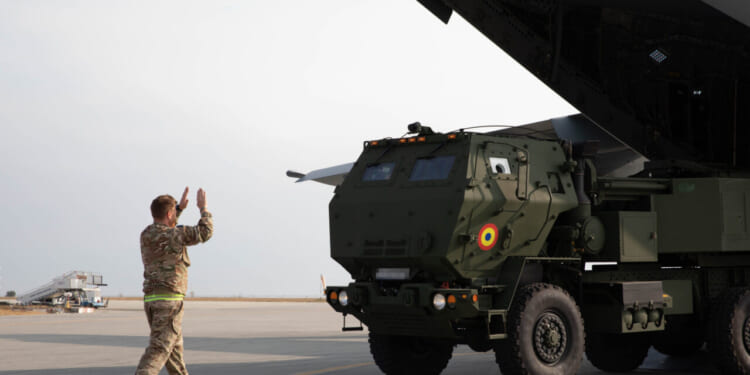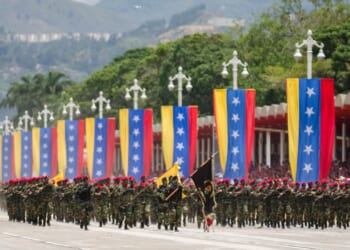The M142 HIMARS is one of the most popular long-range fires weapons in the market.
If artillery is the king of battle, as French military genius Napoleon Bonaparte remarked almost 200 years ago, then rocket artillery is the emperor.
Rocket artillery systems fire missiles at long distances and with great precision. As the Russian military has found out over the past three years in Ukraine, rocket artillery can be devastatingly effective. But getting rocket artillery on the battlefield is a completely different challenge.
HIRAIN Operations
The US military has global commitments. Weapon systems like the M142 High Mobility Artillery Rocket System (HIMARS) are designed to fight anywhere in the world. To facilitate that reality, the US military has developed High Mobility Artillery Rocket System Rapid Insertion (HIRAIN) operations.
In a recent HIRAIN exercise, the 36th Airlift Squadron worked with US Marine Corps and Japanese artillery units to move around M142 HIMARS and support their fire missions.
As part of the training, Airmen conducted HIMARS Direct Reload Inside Plane (HIDRIP) ops, loading and unloading the bulky weapon system from C-130J Super Hercules and MC-130J Commando II transport aircraft.
“HIDRIP pushes and furthers the C130’s capabilities for supporting HIMARS and HIRAIN operations,” Air Force Technical Sergeant Trevor Humes, 36th Airlift Squadron’s instructor loadmaster, said in a press release.
“By practicing rapid reload operations, we better enforce the lethality of our joint partners while reducing everyone’s period of vulnerability. Being able to practice austere operations proves our readiness for contested environments,” the Air Force non-commissioned officer added.
As with most things in the military, teamwork is essential to achieve the mission. That is easier said than done, especially when units from different services are involved. Training events like this one are how the US military prepares for real-world operations.
“This mission wasn’t accomplished by one unit,” Air Force colonel Donavan Laskey, 374th Airlift Wing’s deputy commander, stated. “It was accomplished by multiple units coming together as one team to show what we can do in a joint and combined environment. Our partners from the Marine Corps, 18th Wing, 733rd Air Mobility Squadron and 353rd Special Operations Wing played key roles in making it happen, and it is this kind of teamwork that ensures we are ready to respond whenever and wherever needed.”
HIMARS Is A Popular Weapon System
The M142 HIMARS is one of the most popular long-range fires weapons in the market. At least 10 countries are in the process of receiving the rocket artillery or have shown interest. Only last week, the US State Department gave the green light for the sale of 48 M142 HIMARS to the Australian Army for $705 million.
Despite the global hype around the M142 HIMARS, the rocket artillery weapon has been in service with the US military for two decades. The weapon system was intended as an improvement on the M270 Multiple Launch Rocket System (MLRS), a tracked, slower variant of the M142 HIMARS that can carry one pod of missiles, compared to the newer weapon systems’ two pods. The two weapon systems can use missile pods interchangeably, thus making logistics and operations much more efficient (as the Ukrainian forces have discovered).
Depending on the missiles used, the M142 HIMARS can reach targets between 43 miles and 200 miles away and strike with impressive precision. Moreover, the rocket artillery has impressive mobility (it can reach almost 55 miles per hour), thus making it ideal for evading counter-artillery fire.
In a potential conflict with China, effective HIRAIN operations could prove game-changing by allowing the US military to move rocket artillery around the vast Indo-Pacific area of operations.
About the Author: Stavros Atlamazoglou
Stavros Atlamazoglou is a seasoned defense journalist specializing in special operations and a Hellenic Army veteran (national service with the 575th Marine Battalion and Army HQ). He holds a BA from the Johns Hopkins University and an MA from the Johns Hopkins’ School of Advanced International Studies (SAIS). His work has been featured in Business Insider, Sandboxx, and SOFREP.
Image: DVIDS.

















